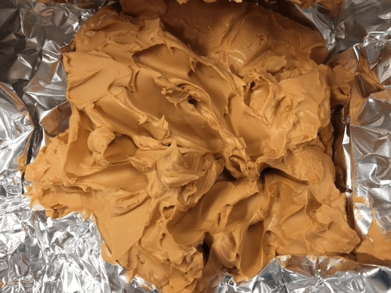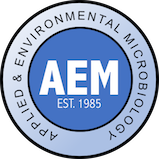
Acrylamide (AMD) is an important commodity chemical that is used in the formation of the polymer, polyacrylamide (PAM). PAM is used primarily in water treatment and in various other industries as coagulators, soil conditioners, mineral refiners, stock additives for paper treatment and sizing, adhesives, paints, and petroleum recovering agents. As of 1995, worldwide demand for AMD was estimated at 200,000 metric tons per year. Decades ago, commercial acrylamide was mainly produced by using a Raney copper-based catalyst to hydrolyze acrylonitrile (AN). In 1976, Commeyras patented the first potentially commercial biological conversion of acrylonitrile to acrylamide. Since then, the microbial bioconversion process has become of greater interest due to its economical and technical advantages.
Bioconversion of Acrylonitrile to Acrylamide using Rhodococcus rhodochrous DAP 96253


Ca-Alginate Immobilized Rhodococcus rhodochrous DAP 96253 Cells

PAM Immobilized Rhodococcus rhodochrous DAP 96253 Cells
Rhodococcus rhodochrous DAP 96253 uses the nitrile hydratase and amidase enzymatic pathway to catalyze the hydrolysis of nitriles to amides to acids and ammonia for metabolic use. Its ability to produce an intermediate amide from a nitrile in a separate reaction step, using nitrile hydratase, makes Rhodococcus rhodochrous DAP 96253 a suitable choice for the industrial bioconversion of ACN to AMD. This bacterial strain is characterized as having much lower amidase levels than nitrile hydratase levels. Thus, producing lower levels of unwanted by-products, acrylic acid and ammonia, and higher levels of the product, acrylamide.
When growing R. rhodochrous DAP 96253, enhanced expression of the levels of nitrile hydratase produced by the bacteria is accomplished by inductions of the cells. Induced cells of Rhodococcus rhodochrous DAP 96253 were shown to produce the highest levels of nitrile hydratase. These nitrile hydratases have been evaluated for the bioproduction of acrylamide.
For industrial production purposes, cells that are reusable and maintain enzymatic activity are preferred for cost and time benefits. The immobilization of bacterial cells in a matrix can aid in the sustainability of the enzymatic function over time and the ability to reuse cells multiple times. Entrapping the cells via a variety of procedures, such as polyacrylamide, calcium alginate, and polyethylenimine-glutaraldehyde, can be used to create sustainability of Rhodococcus rhodochrous DAP 96253’s nitrile hydratase. Most immobilization techniques create an initial decrease in enzymatic activity and some, a gradual decrease in overall activity levels over time. Consistent practice of enzymatic techniques should increase the retention of enzymatic activity.
Research Spotlight – Bioconversion

Whole-cells of Rhodococcus rhodochrous DAP 96253

GA-PEI Immobilized Rhodococcus rhodochrous DAP 96253 Cells
Current research using whole and immobilized cells of R. rhodochrous DAP 96253 has produced consistent commercial grade levels of AMD, 40-50%, with minimal by-products, like residual acrylonitrile or converted acrylic acid and ammonia. By purifying the nitrile hydratase enzyme and using it either in free form or immobilized, a cleaner product can be produced than with using a whole or immobilized cell. This is due to the absence of amidase to further the conversion of acrylamide once it is formed. This advantage increases yield and has significant cost benefits. Isolated enzymes come with disadvantages too. Purified enzymes are far less stable than whole cells, immobilized or not. This disadvantage has been remediated by the immobilization of the enzyme. The usability, stability, and activity of the enzyme after immobilization all depend on the enzyme, pH, extant of crosslinking, the procedure performed, and the material to which the enzyme is attached. The use of polyacrylamide as an attachment material has been used since the 1960s. The strong negatively charged matrix enhances the mode of action for various enzymes. The use of DEAE-cellulose have also been used to increase the overall enzymatic activity from whole cells to immobilized enzyme. Other resins including DEAE-Sephacel and DEAE-Sephadex will be tested for the same results.
